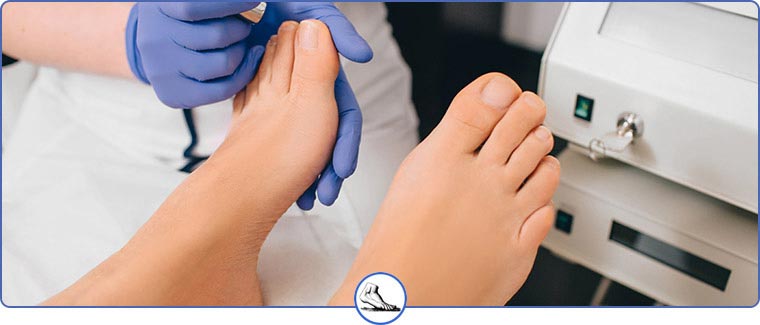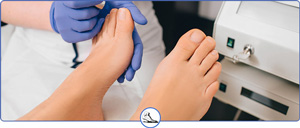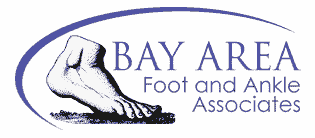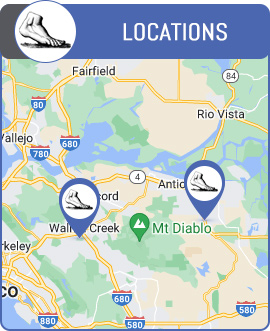In-Toeing Treatment Specialist in Walnut Creek, CA, and Brentwood, CA
In-toeing is a condition where the foot, thigh, and shin are not properly aligned, which causes the foot to bend inward. If left untreated, it can affect growth and general development. Most children with in-toeing don’t experience any pain or functional issues. At Bay Area Foot and Ankle Associates, Dr. John W. Scivally, DPM, and Dr. Robin K. Lie, DPM can help in managing your in-toeing by taking a birth and development history, observing your child walk while running, and examining motion for their hip, foot, and knee during physical examination. For more information, contact us or schedule an appointment online. We have convenient locations to serve you in Walnut Creek, CA and Brentwood, CA.


Table of Contents:
What is the most common cause of in-toeing?
What are the symptoms of In-Toeing?
What happens if toe walking goes untreated?
Can In-Toeing be prevented?
In-toeing, also referred to as “pigeon toes,” is a condition where the alignment of bones in the foot, shin, or thigh is not in the proper position.
There are three most common causes of in-toeing.
The most common cause is related to the bones in the foot. Babies younger than 12 months of age may have a condition called metatarsus adductus, where the midfoot is malformed, causing the toes to point towards the center and giving the foot a distinctive “C” shape. Several factors, such as breech presentation during pregnancy, insufficient amniotic fluid, or a family history, can increase the likelihood of metatarsus adductus.
Another common cause occurs between the ages of 1 and 3 when the shin bone or tibia is inwardly rotated, a condition known as inward tibial torsion. This rotation towards the middle of the body can make the child’s legs appear bow-legged. Fortunately, inward tibial torsion typically resolves naturally as the child grows, usually by the age of 5.
The third cause involves the thigh bone or femur. Femoral anteversion is characterized by an inward rotation of the thigh bone, causing the knee to appear turned inward compared to the hip.
It can be hereditary or a result of fetal positioning or crowding in the uterus. Femoral anteversion is commonly diagnosed between the ages of 3 and 6, and over time, the inward rotation gradually decreases.
In-toeing, a common condition observed in many children during their early stages of walking, is characterized by the inward pointing of the feet while walking. Most toddlers who experience in-toeing learn to engage in physical activities like running and jumping, just like their peers. Children with in-toeing often walk or run with one or both feet turned inward, which can be noticed by parents through an awkward gait pattern.
Another observation might be the uneven wearing of the soles of their shoes. While in-toeing typically does not cause pain, it can occasionally lead to tripping and falling accidents for the child. In most cases, in-toeing resolves on its own as the child grows and develops, without the need for specific medical intervention; however, this is not always the case.
If left untreated, in-toeing, specifically toe-walking, can have various consequences on a child’s foot and overall development. Walking on tiptoes places excessive strain on the muscles and tendons involved. Over time, some children who consistently walk on their toes may develop foot deformities, and this can occur as early as the age of four.
These deformities can manifest as restrictions in ankle range of motion, compromised balance, and poor postural alignment. Without appropriate intervention, in-toeing can increase the risk of contractures, which refers to the shortening of muscles, as well as exacerbate foot deformities and balance issues. In severe cases, surgical interventions might be necessary to address deformities or contractures. Fortunately, physical therapy interventions often prove to be effective in helping children manage and improve these conditions, offering a non-surgical approach to treatment.
Foot and ankle specialists such as those at Bay Area Foot and Ankle Associates Corp can diagnose and treat in-toeing to ensure no long-term problems develop.
In-toeing can be prevented largely by addressing the underlying causes, although complete prevention may not always be possible. In-toeing can, however, be minimized by taking several measures.
Making sure your child wears properly fitting shoes with adequate support is an important step. It is important to choose footwear that promotes healthy foot alignment by allowing for natural foot movement and avoiding restrictive designs.
It is possible to maintain proper alignment during movement by engaging in activities that promote muscle and bone strength, coordination, and balance. Furthermore, excessive sitting and inactivity can result in muscle imbalances and reduced flexibility.
Muscles and joints can be kept flexible and strong by participating in age-appropriate sports or exercises. When they are seated, encourage your child to sit with their feet flat on the floor or supported by a footrest, rather than in positions that place excessive stress on the legs or feet.
Regular check-ups with a healthcare professional are recommended to monitor your child’s growth and development, including the alignment of their feet and legs.
In-toeing treatment is available at Bay Area Foot and Ankle Associates. For more information, contact us or schedule an appointment online. We have convenient locations to serve you in Walnut Creek, CA and Brentwood, CA. We serve patients from Walnut Creek CA, Brentwood CA, Antioch CA, Alamo CA, Danville CA, Concord CA, Pleasant Hill CA, Pittsburg CA, Oakley CA and surrounding areas.

Additional Services You May Need
▸Custom Foot Orthotics
▸Ingrown Toenail Specialist
▸Traditional Podiatry Care
▸Foot and Ankle Surgery Clinic
▸Bunion Doctor
▸Corns and Calluses
▸Foot Arthritis and Joint
▸Warts
▸Video Gait Analysis
▸Athletic Taping
▸Pediatric Foot Specialist
▸Gait Abnormalities
▸Foot Dermatologist
▸Foot Deformities
▸Chronic Foot Injury
▸Diabetic Foot Specialist
▸Acute Foot Injuries
▸Podiatric Sports Services
▸Plantar Fasciitis Specialists


